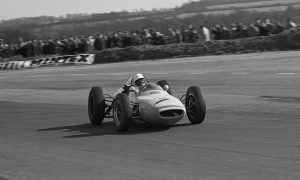
© Caterham & Red Bull
CRASH-TEST
A monocoque is produced for the purpose of passing Formula 1's mandatory crash test.
The various homologation tests, which follow a strict scientific protocol overseen by a representative of the FIA, are conducted partly at the factory and partly in one of the centres approved by the governing body: the Cranfield Impact Centre and the Transport Research Laboratory in Great-Britain, and the CSI laboratory in Milan:
“Homologation tests take place at Enstone and Cranfield. Static tests at Enstone, dynamic tests at Cranfield.”
ASSEMBLING AND SHAKE DOWN
Once all 20 000 parts have been manufactured, the building of the car can start:
“It takes around 2 weeks to build the car once all the assemblies are ready. The designers release assembly drawings for each area (i.e. chassis, suspension, gearbox...). Some assemblies take a couple of weeks to put together first, such as the gearbox.”

© Renault F1 | Renault and Enstone: a long story...
Finally, in order to check that everything functions correctly on the car, the team takes advantage of a promotional film day in compliance with the rules to conduct a shake down test of the new chassis: “We usually shake down at a filming day a few days prior to the first test”, concludes Nick Chester.
While the first chassis, which will be used in testing, is transported to Barcelona, a second chassis is assembled at the factory, in time for the first race of the season. Spare parts are produced for winter testing, but only in limited quantities as the car's initial aerodynamic configuration is set to evolve.
With only three months between seasons, the process never stops. At the end of the tests, the engineers will start thinking about the next chassis...

© XPB Images
Many thanks to Nick Chester, Renault Sport Formula One Team Chassis Technical Director, for providing us with his precious help and generous time.
The final part of this feature owes much to the great article by Gary Savage, “Composite Materials Technology in Formula 1 Motor Racing”, which we recommend reading for additional insight and details.
The birth of a Formula 1 car: 1. The conceptual work — 2. The production schedule — 3. The design — 4. The production







